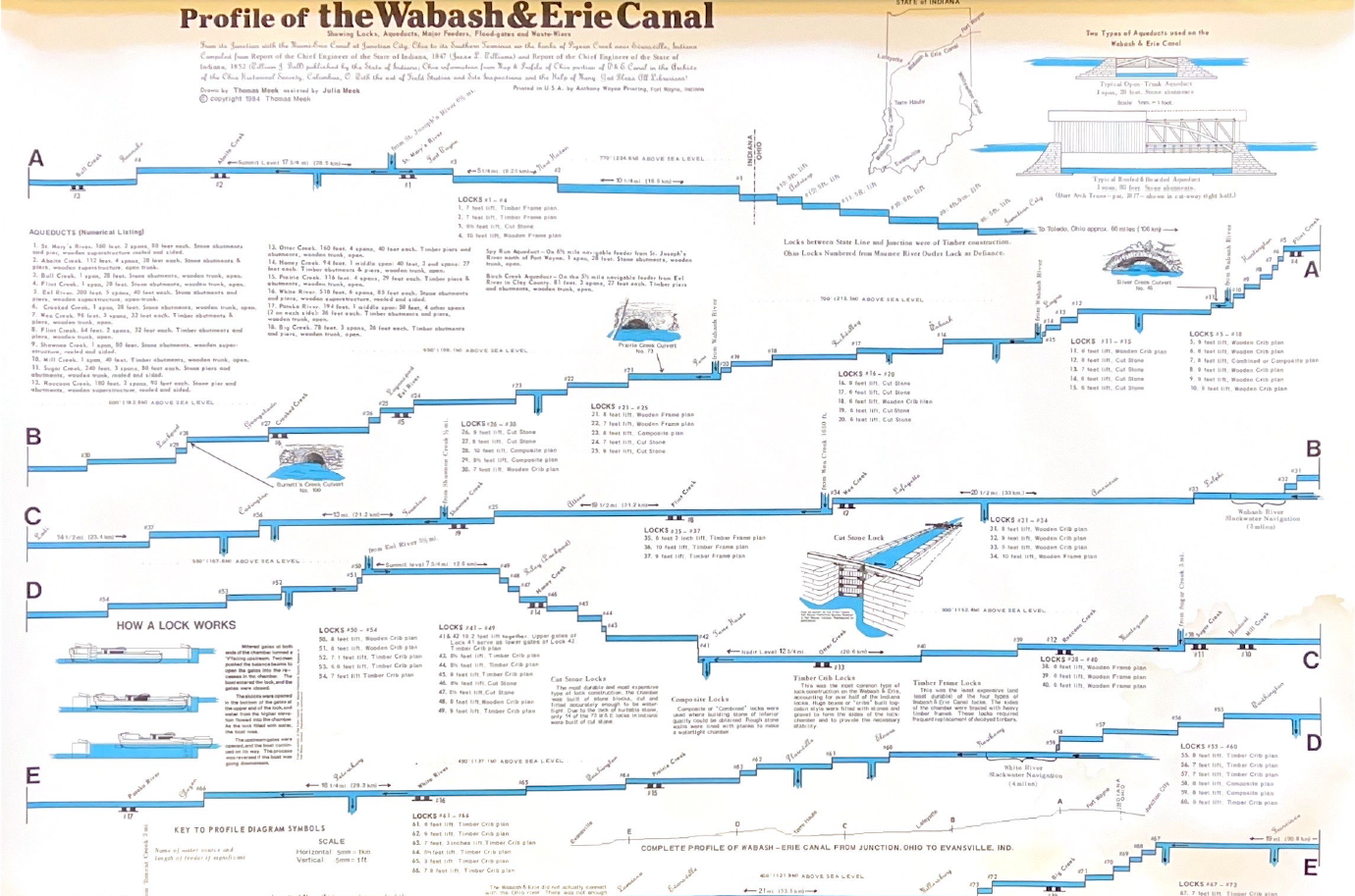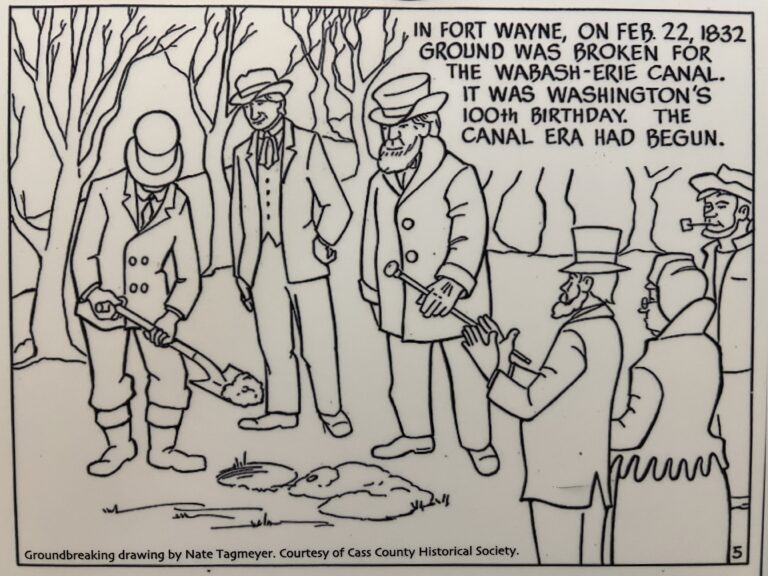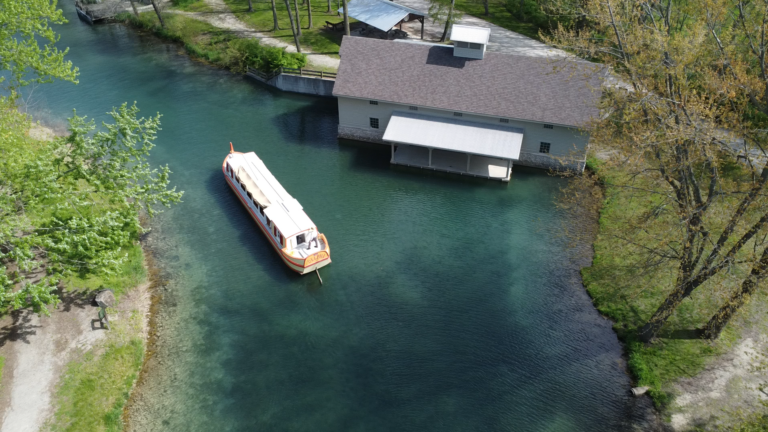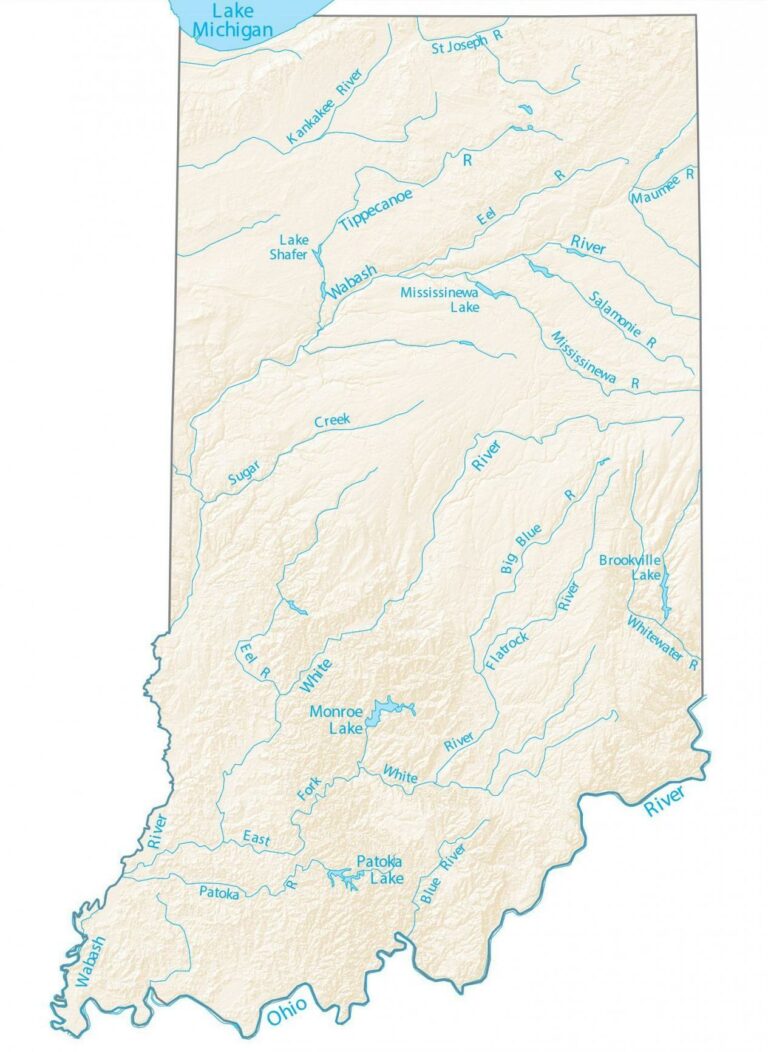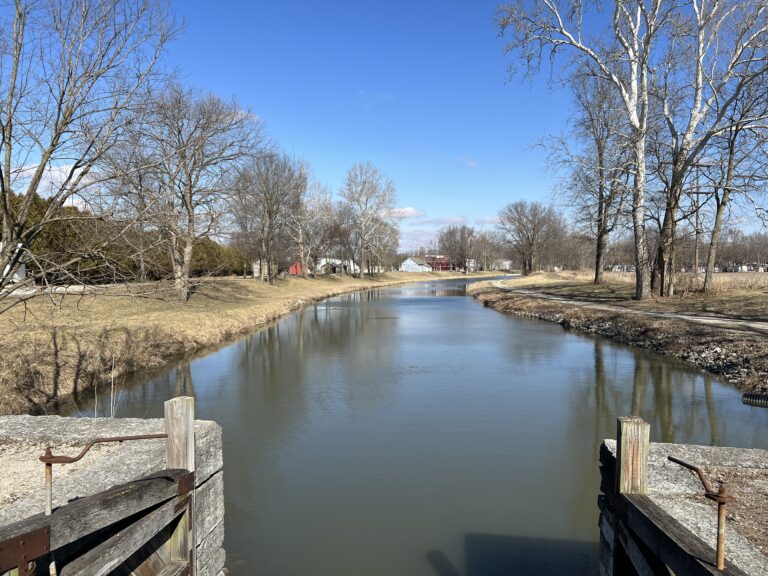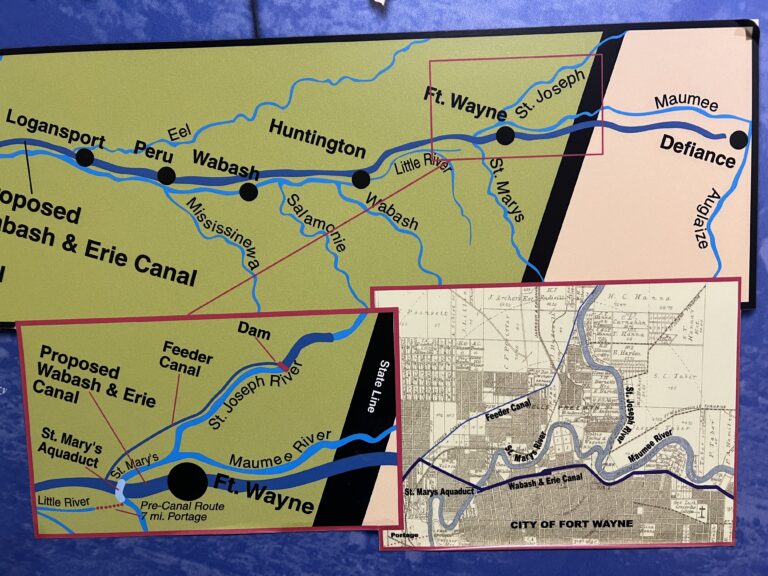Note: This series originally aired on WBOI FM public radio of Northeast Indiana. Thanks to Tom Castaldi for allowing and facilitating its reproduction.
A lock in the Wabash & Erie Canal was like a box with watertight gates on each end for closing off the water, or opening up to let in the water.
Going uphill, a boat was floated into the box and the door was closed behind. Water from the uphill higher level would be let in. As the water filled up the lock, the boat rose to the higher level. The second gate was opened, and the boat moved out at the uphill water level. Going downhill, just the opposite happened.
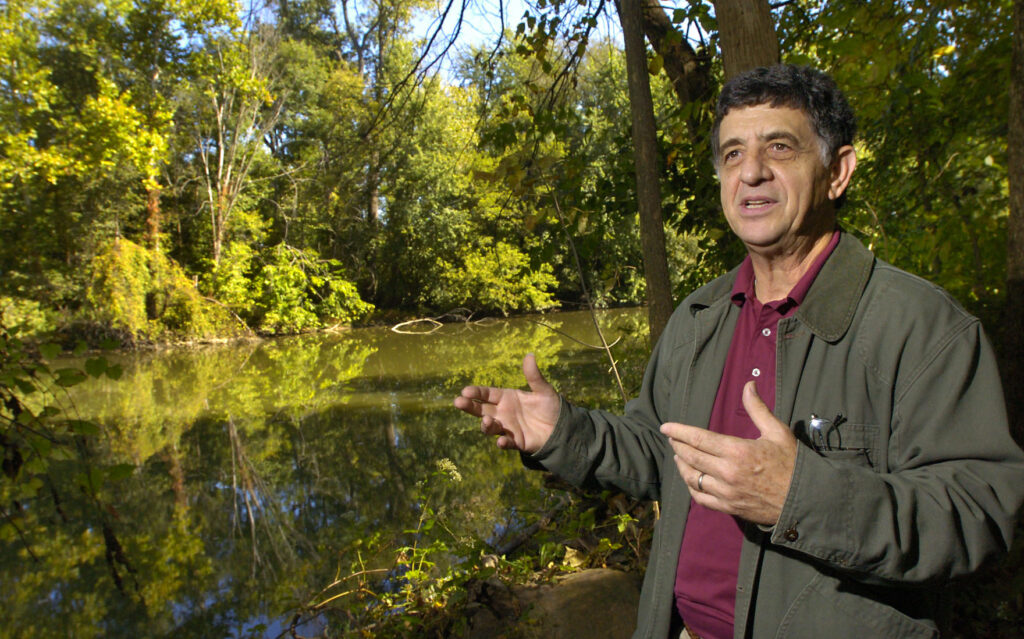
Lockkeepers did all the gate moving work by hand. For their efforts, locks are remembered by the lockkeepers’ names. It took three locks to move a boat from the Indiana-Ohio line up to the town of Fort Wayne.
Sailors Lock had disappeared from its old digs a few yards into Indiana and alongside Highway 24. Joseph Gronauer, the namesake of Gronauer Lock No. 2, had been buried and forgotten until work crews unearthed the lock in 1991 during construction of the I-469 access ramp to U.S. 24 East. What’s left of Moots Lock is under the railroad about a block east of Anthony Boulevard in Fort Wayne.
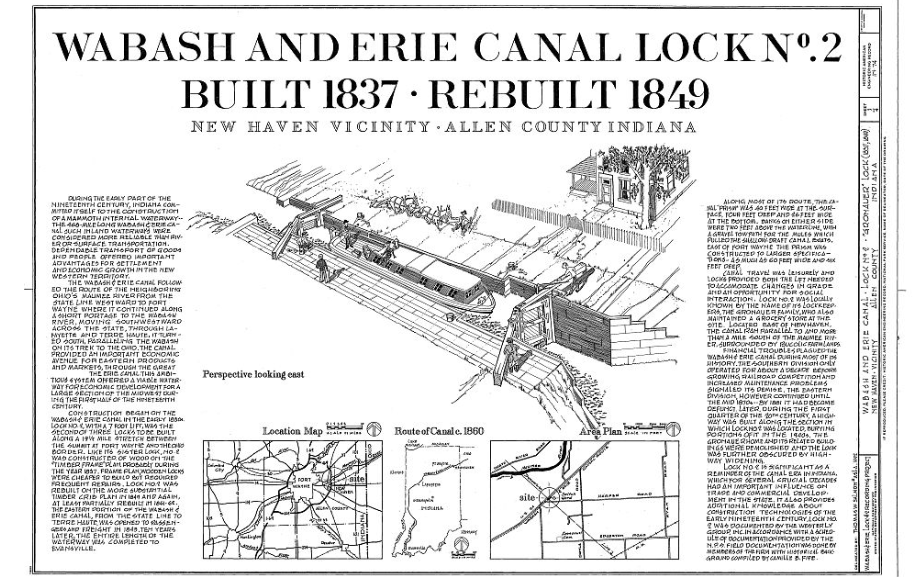
Today U.S. 24 took over the canal right-of-way from the State Line cutting through New Haven but lies beneath the Conrail line through Fort Wayne. Here it reached its highest point, and after a second rise in elevation near Terre Haute, Indiana, it was downhill all the way to the Ohio River.

Locks made the canal possible, but it took 73 of them to actually move boats up and down the 468-mile route of the finished Wabash & Erie Canal.

